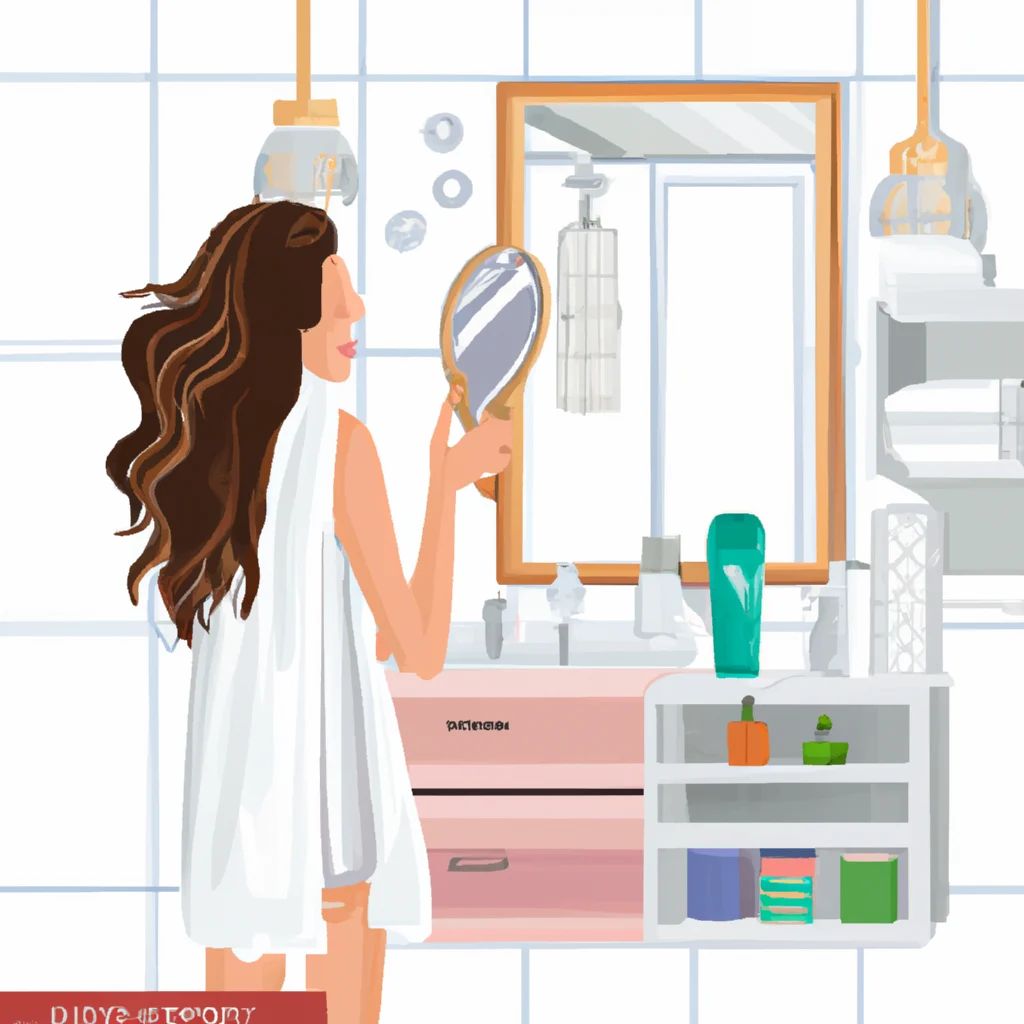Frizzy hair can be a source of frustration for many individuals, especially after showering when hair is most susceptible to moisture and humidity. In this article, we share effective strategies and techniques to prevent frizzy hair, drawing on American beauty secrets that have stood the test of time. Each section will provide actionable advice and insights to help maintain smooth, manageable hair.
Understanding Frizz: Causes and Effects
Frizz occurs when hair becomes dry and lacks moisture, leading to a frayed appearance. This condition can be exacerbated by various factors, including:
Genetics and Hair Type
Genetic predisposition plays a significant role in hair texture. Individuals with curly or wavy hair types are more prone to frizz due to the structure of their hair shafts.
Environmental Factors
Humidity is a primary culprit in frizz formation. When the air contains high moisture levels, hair absorbs this moisture, causing the cuticles to lift and create frizz.
Hair Damage
Over-processing hair through chemical treatments, excessive heat styling, and inadequate care can lead to damaged hair, making it more prone to frizz.
Improper Hair Care Products
Using the wrong products can strip hair of its natural oils, leading to dryness and frizz. It is essential to choose products specifically formulated for your hair type.
Pre-Shower Preparations
Preventing frizz starts before you even enter the shower. Here are essential preparations to take:
Choose the Right Shampoo
Opt for a sulfate-free shampoo that does not strip hair of its natural oils. Look for ingredients like argan oil or coconut oil, which can help retain moisture.
Conditioning is Key
A good conditioner is crucial. Use a deep conditioning treatment weekly to nourish and hydrate your hair. Focus on the ends, where hair tends to be the driest.
Detangle Before Showering
Gently detangle your hair before washing. This practice minimizes breakage and prepares your hair for the washing process.
Showering Techniques to Reduce Frizz
The way we shower can significantly affect our hair condition. Here are techniques to keep in mind:
Water Temperature Matters
Use lukewarm water to wash your hair. Hot water can strip moisture from hair, while cold water can help seal the cuticle, resulting in less frizz.
Limit Washing Frequency
Washing hair too frequently can lead to dryness. Aim to wash your hair two to three times a week, allowing natural oils to nourish your strands.
Gentle Application
Apply shampoo gently, focusing on the scalp, and let the suds clean the ends. Avoid excessive rubbing, which can lead to frizz.
Post-Shower Hair Care
What you do after showering is just as important as your pre-shower routine. Follow these steps to keep frizz at bay:
Drying Techniques
Avoid vigorous towel drying, which can cause friction and frizz. Instead, gently squeeze excess water from your hair and use a microfiber towel or an old T-shirt to pat it dry.
Leave-In Conditioners and Serums
Apply a leave-in conditioner or anti-frizz serum while your hair is still damp. Look for products with silicone or oils that coat the hair and provide a barrier against humidity.
Avoid Heat Styling Immediately
Allow your hair to air dry whenever possible. If you must use heat styling tools, ensure your hair is adequately protected with a heat protectant spray.
Styling Tips for Frizz-Free Hair
When it comes to styling, there are numerous methods to minimize frizz:
Choose the Right Tools
Invest in high-quality brushes and combs designed for your hair type. A wide-tooth comb is ideal for detangling wet hair without causing breakage.
Use Anti-Frizz Products
Styling creams, gels, and serums specifically designed to combat frizz can make a significant difference. Apply these products evenly throughout your hair for best results.
Protective Hairstyles
Consider protective hairstyles that tuck away your ends and reduce exposure to humidity and friction. Braids, buns, and twists can be effective options.
Seasonal Considerations
Different seasons can impact hair frizz levels. Here are tips tailored to seasonal changes:
Winter Care
Cold air can lead to dryness. Increase your use of moisturizing products and consider wearing a hat to protect your hair from harsh elements.
Summer Strategies
Summer brings humidity, which can exacerbate frizz. Use anti-humidity sprays and consider reducing the use of heat styling tools during this season.
Diet and Hydration
A well-balanced diet plays a crucial role in maintaining healthy hair. Here are dietary tips to consider:
Hydration is Essential
Drink plenty of water to keep your hair hydrated from the inside out. Aim for at least eight glasses a day.
Nutrient-Rich Foods
Incorporate foods high in omega-3 fatty acids, vitamins A, C, and E, and biotin. Foods such as salmon, nuts, and leafy greens can promote healthy hair.
Regular Maintenance and Treatments
Regular hair maintenance is vital for combating frizz:
Regular Trims
Schedule regular trims every 6-8 weeks to remove split ends and keep hair looking healthy and manageable.
Professional Treatments
Consider professional treatments such as keratin or smoothing treatments, which can help reduce frizz and improve hair texture for an extended period.
Conclusion
Preventing frizzy hair after showering involves a comprehensive approach that incorporates proper techniques, tools, and products. By understanding the causes of frizz and implementing these American beauty secrets, we can achieve smooth, manageable hair. For further tips on lifestyle and beauty, visit Nivax Lifestyle.


